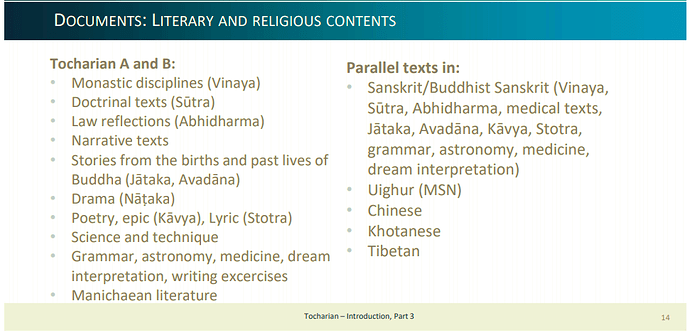Anyone here who, like me, has gone from studying Pali to the rabbit hole of Indology at large may find this free online course interesting:
Early Vedic is the oldest attested Indo-Aryan language. Early Vedic is famous for its unique oral tradition (see introduction). Its importance for the reconstruction of Proto-Indo-European can hardly be overestimated. It is the only IE language preserving breathy voiced consonants, traditionally represented as voiced aspirated. Its sandhi phenomena allow for glimpses into prosodic structure quite unexpected for a dead language (see sounds). Vedic has an archaic and rich case system (see words) and a complex pattern of finite and infinite embedding (see structures).
Early Vedic (which I believe is also referred to as “Vedic Sanskrit”) is of course the language of the Vedas. As the diagram below shows, however, although Early Vedic is older than Sanskrit proper, it is nonetheless not a direct ancestor of Pali, more like an aunt or uncle!
This quote (citing Thomas Oberlies’ grammar of Pali) from Wikipedia explains this a bit more (where Early Vedic is referred to by yet another term, ‘Ṛgvedic Sanskit’):
Pāḷi, as a Middle Indo-Aryan language, is different from Classical Sanskrit more with regard to its dialectal base than the time of its origin. A number of its morphological and lexical features show that it is not a direct continuation of Ṛgvedic Sanskrit. Instead it descends from one or more dialects that were, despite many similarities, different from Ṛgvedic.Wikipedia: Pali — Geographic Origin
The course is taught by Eystein Dahl (University of Tromsø), Götz Keydana (University of Göttingen), Tim Felix Aufderheide (University of Jena), and consists of 14 20-minutes-ish videos.
Even though the language is obviously more associated with Hinduism than Buddhism, I find it very interesting to learn about both the sociolinguistics of Early Vedic as well as the structure of the language itself. (Certainly the bits on metrical theory are relevant to the study of Pali.)
And if Early Vedic doesn’t float your boat, the same site also offers similar courses on Old Albanian, Classical Armenian, Avestan, Gothic, Ancient Greek, Hittite, Old Irish, Early Latin, Old Lithuanian, Old Church Slavonic, and Tocharian!


 !
!

